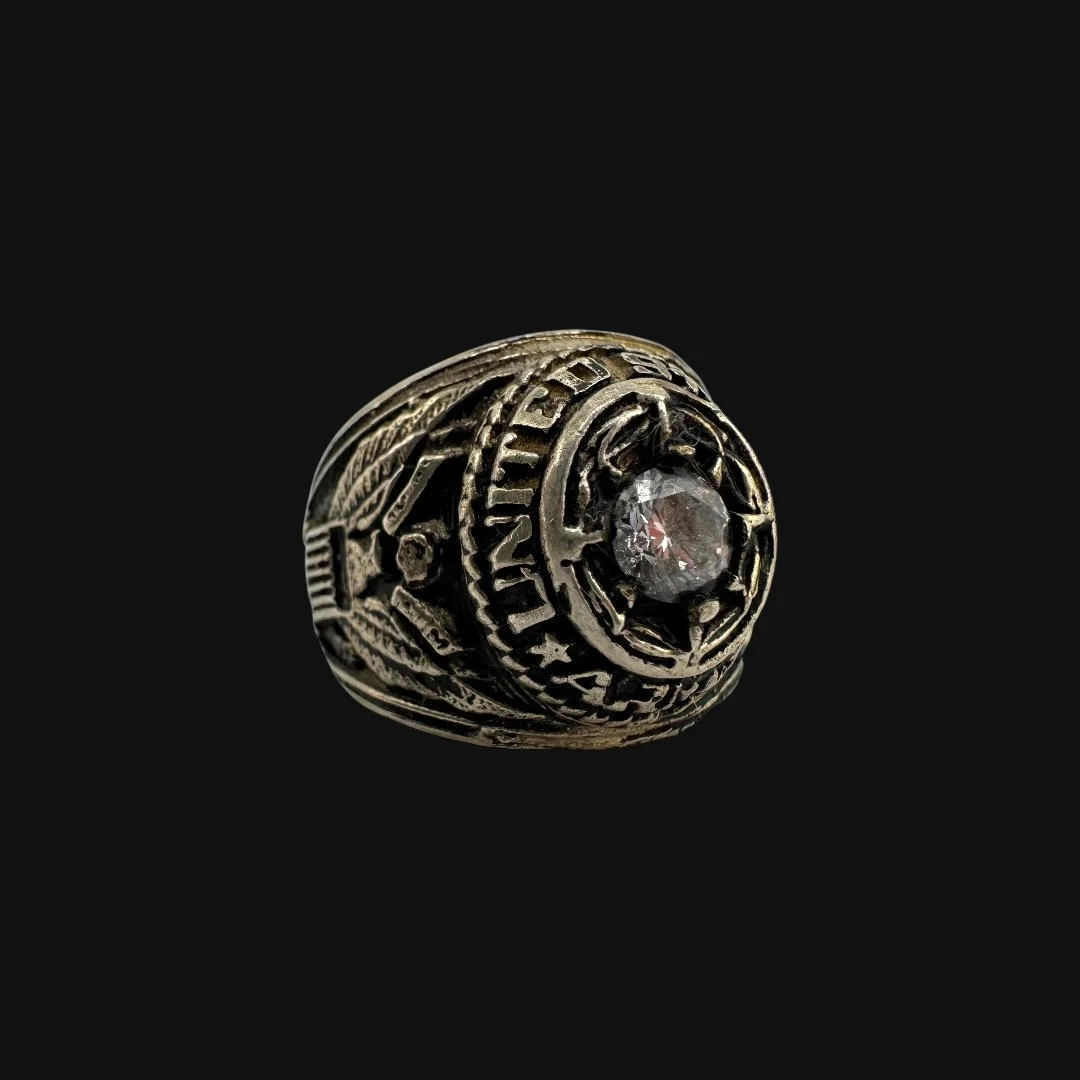 Image 1 of 13
Image 1 of 13

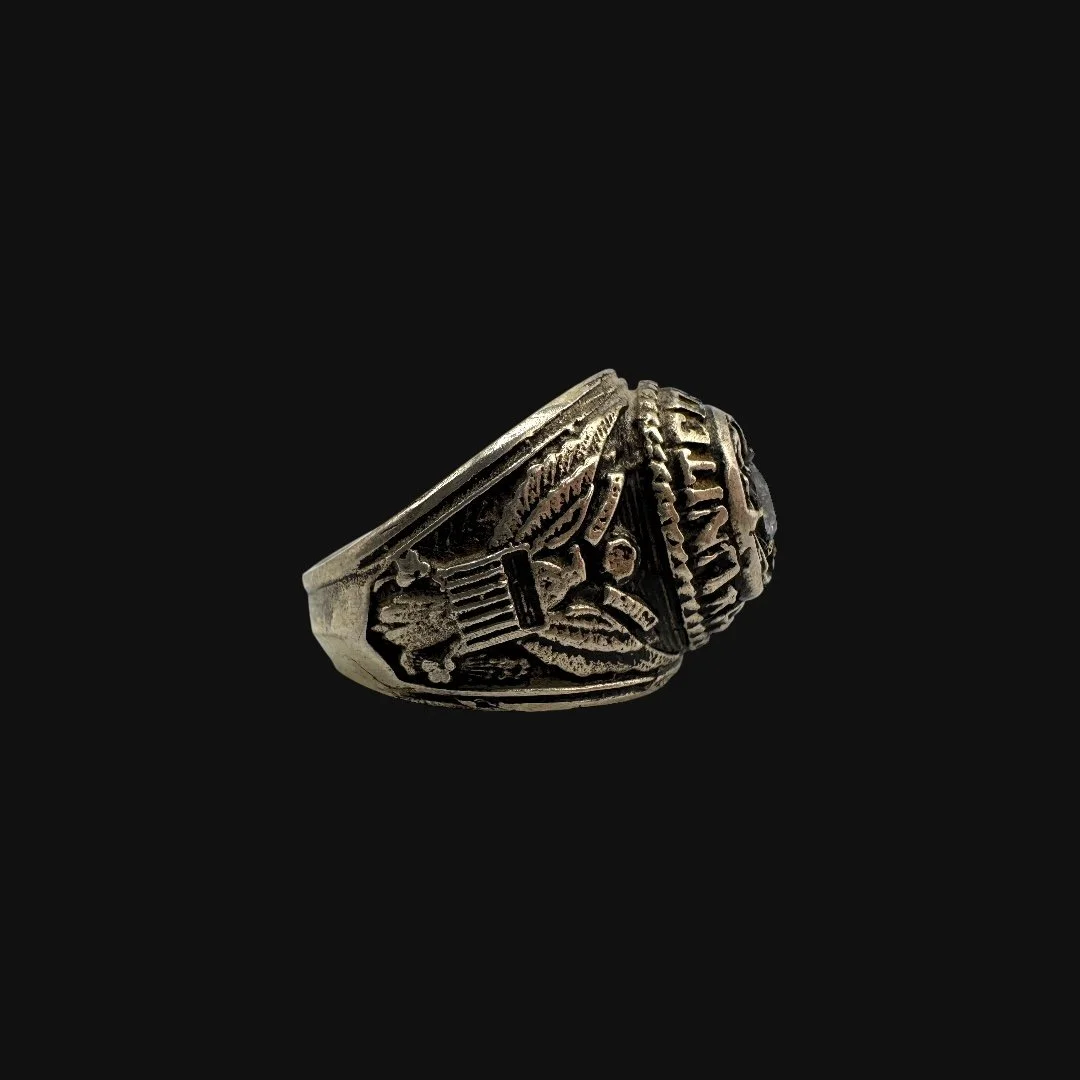 Image 2 of 13
Image 2 of 13

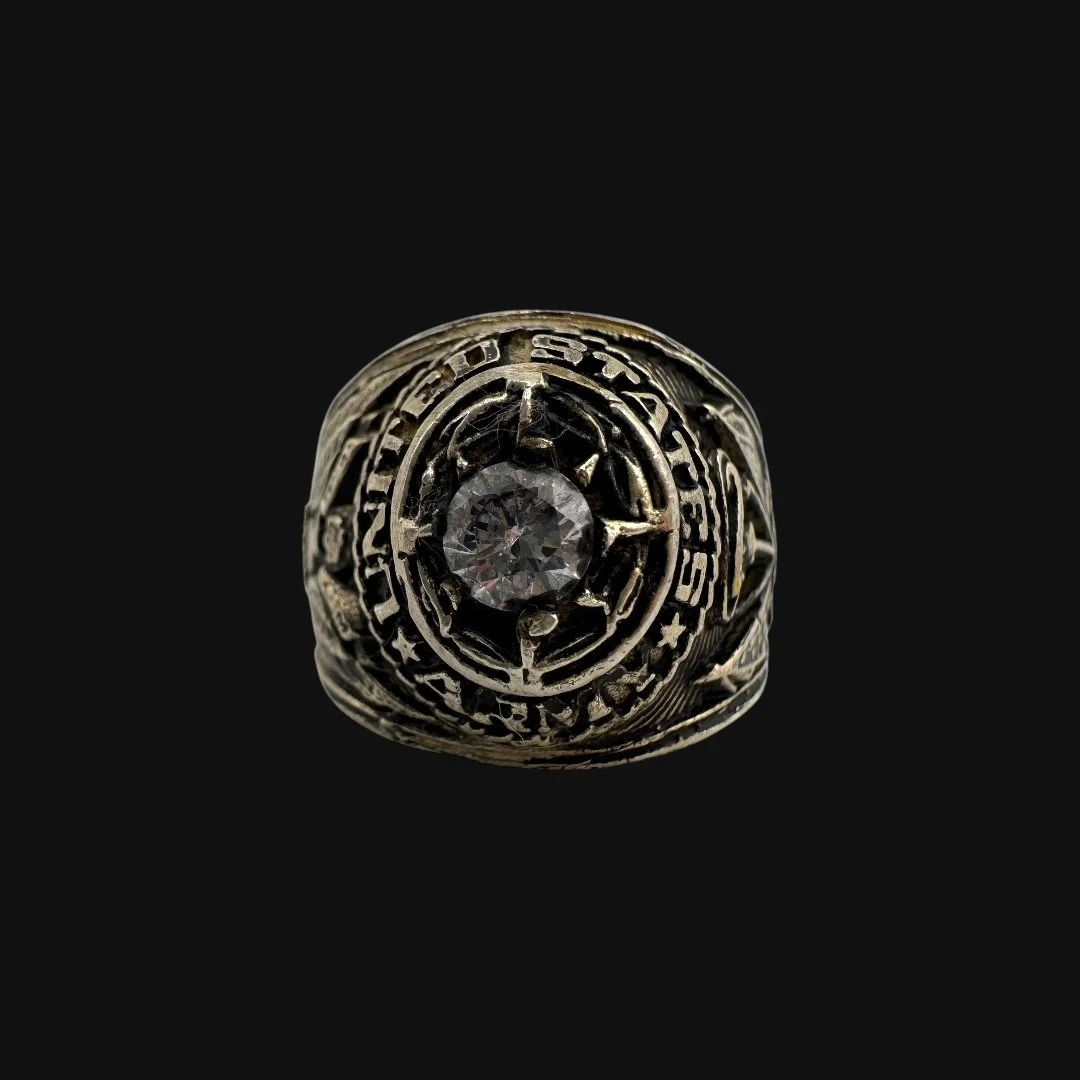 Image 3 of 13
Image 3 of 13

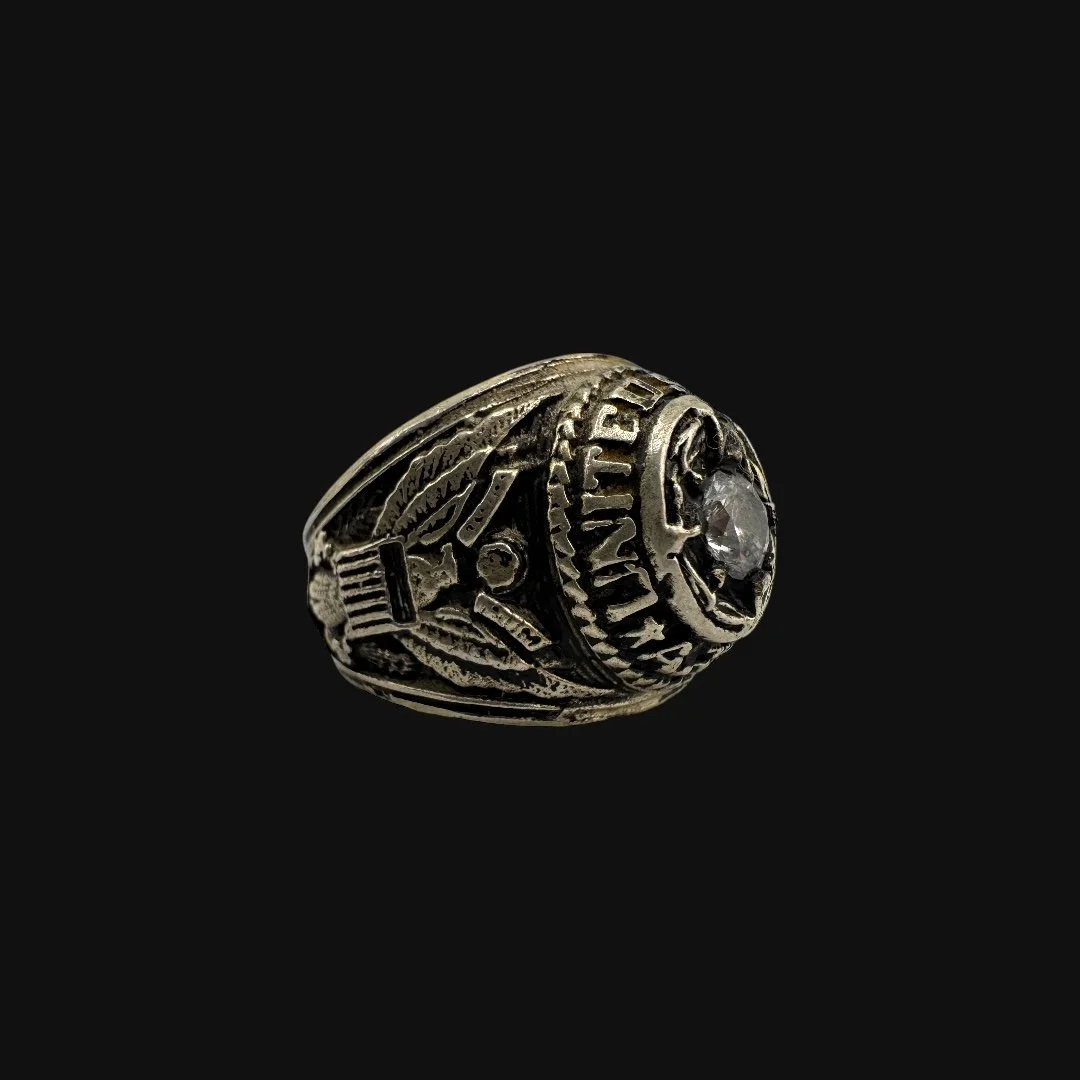 Image 4 of 13
Image 4 of 13

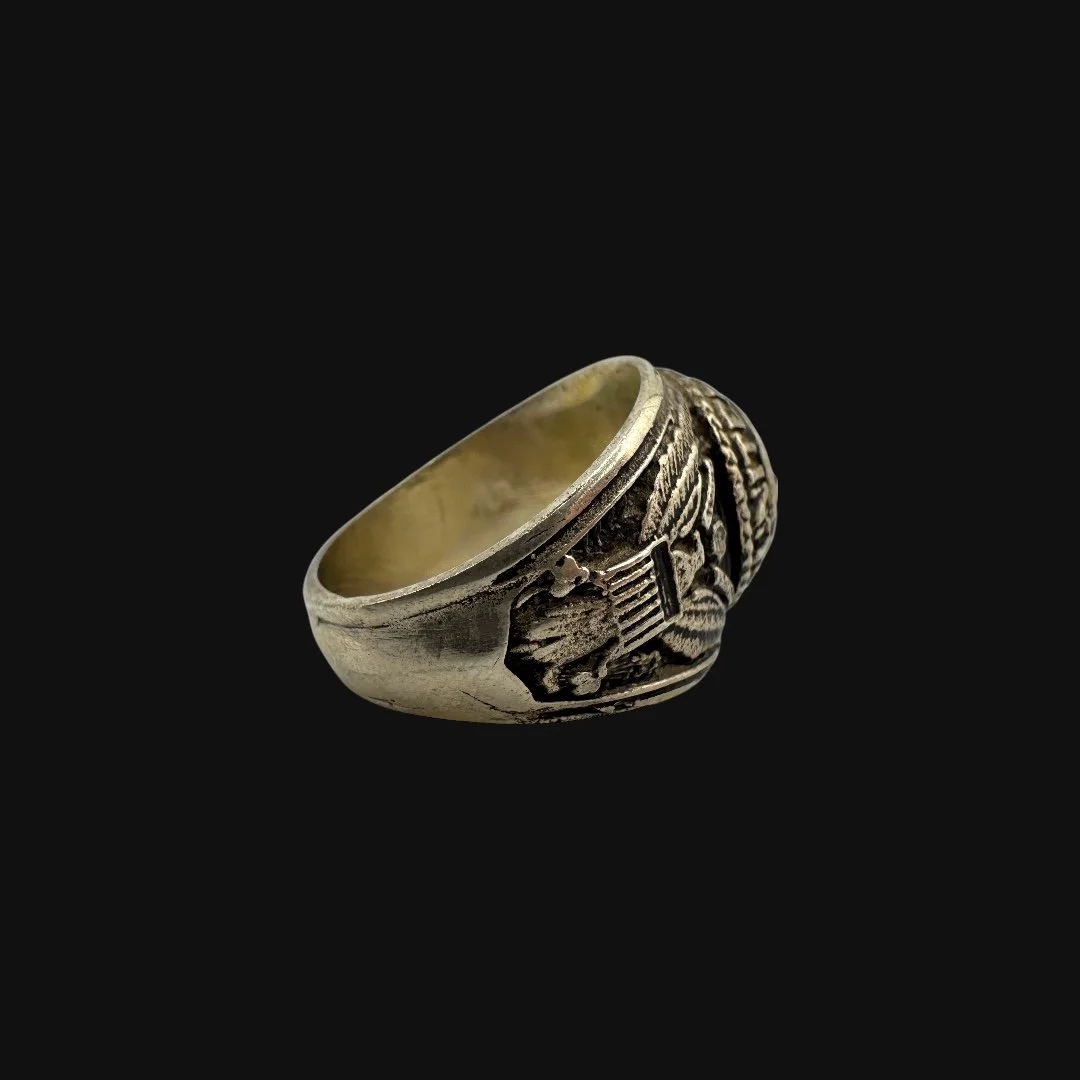 Image 5 of 13
Image 5 of 13

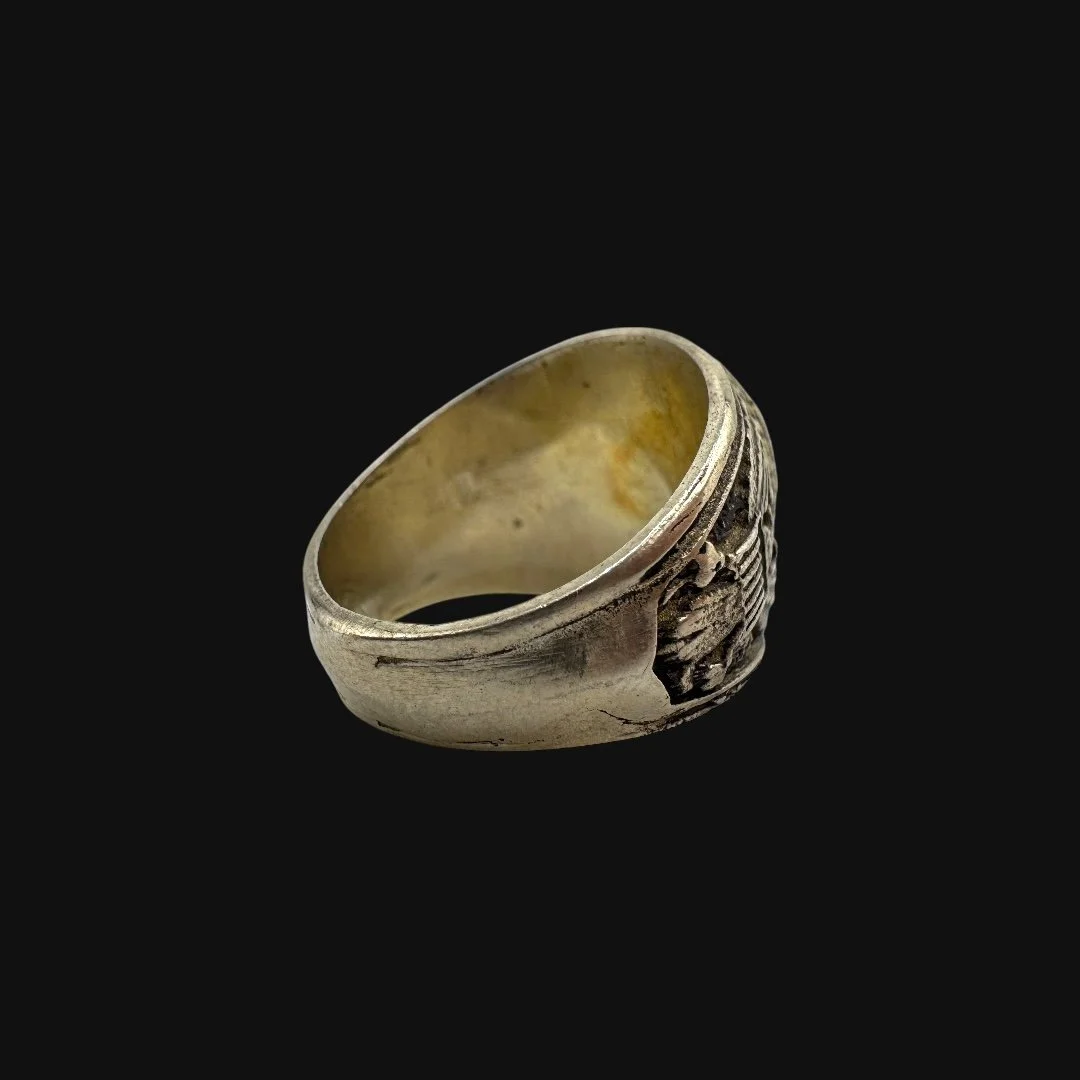 Image 6 of 13
Image 6 of 13

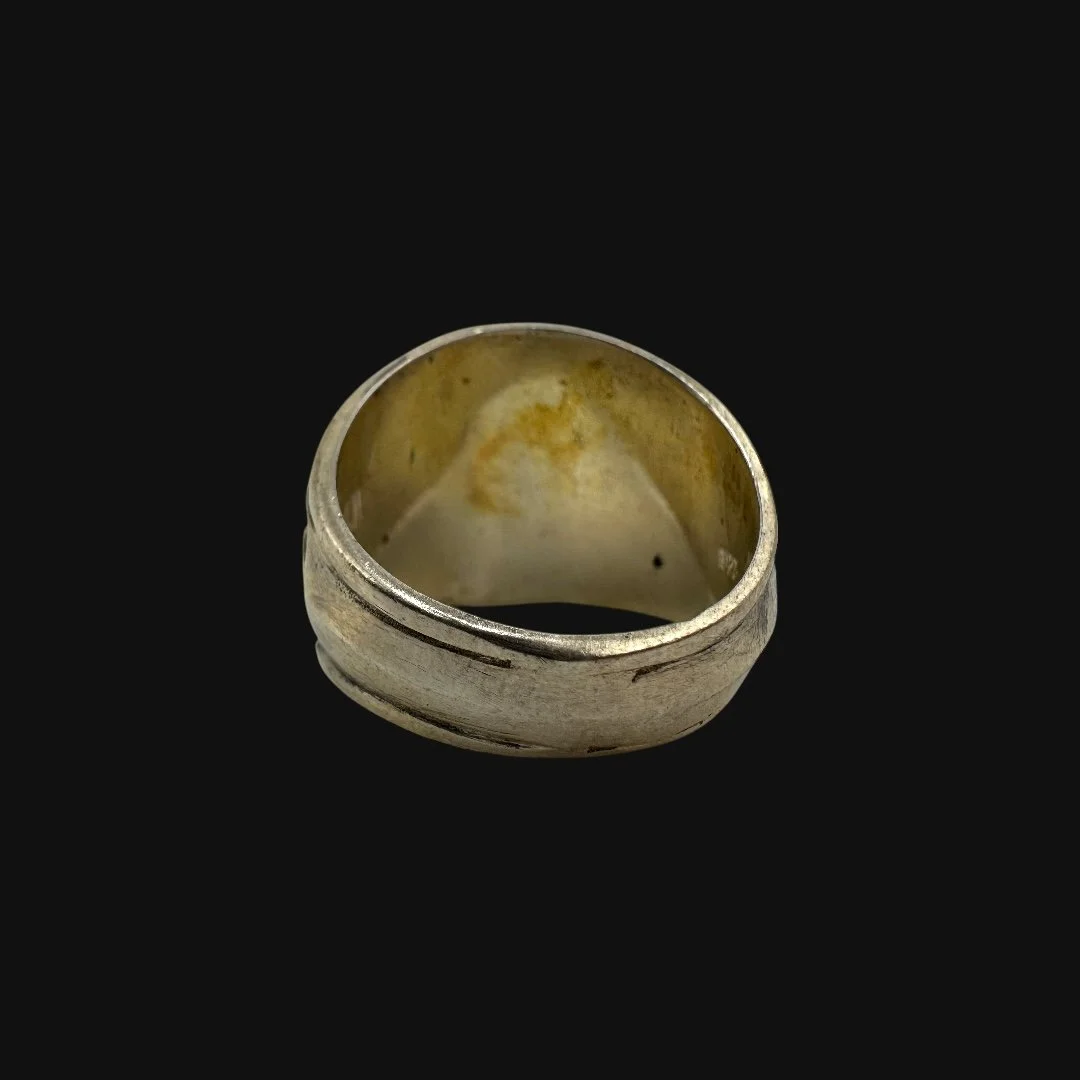 Image 7 of 13
Image 7 of 13

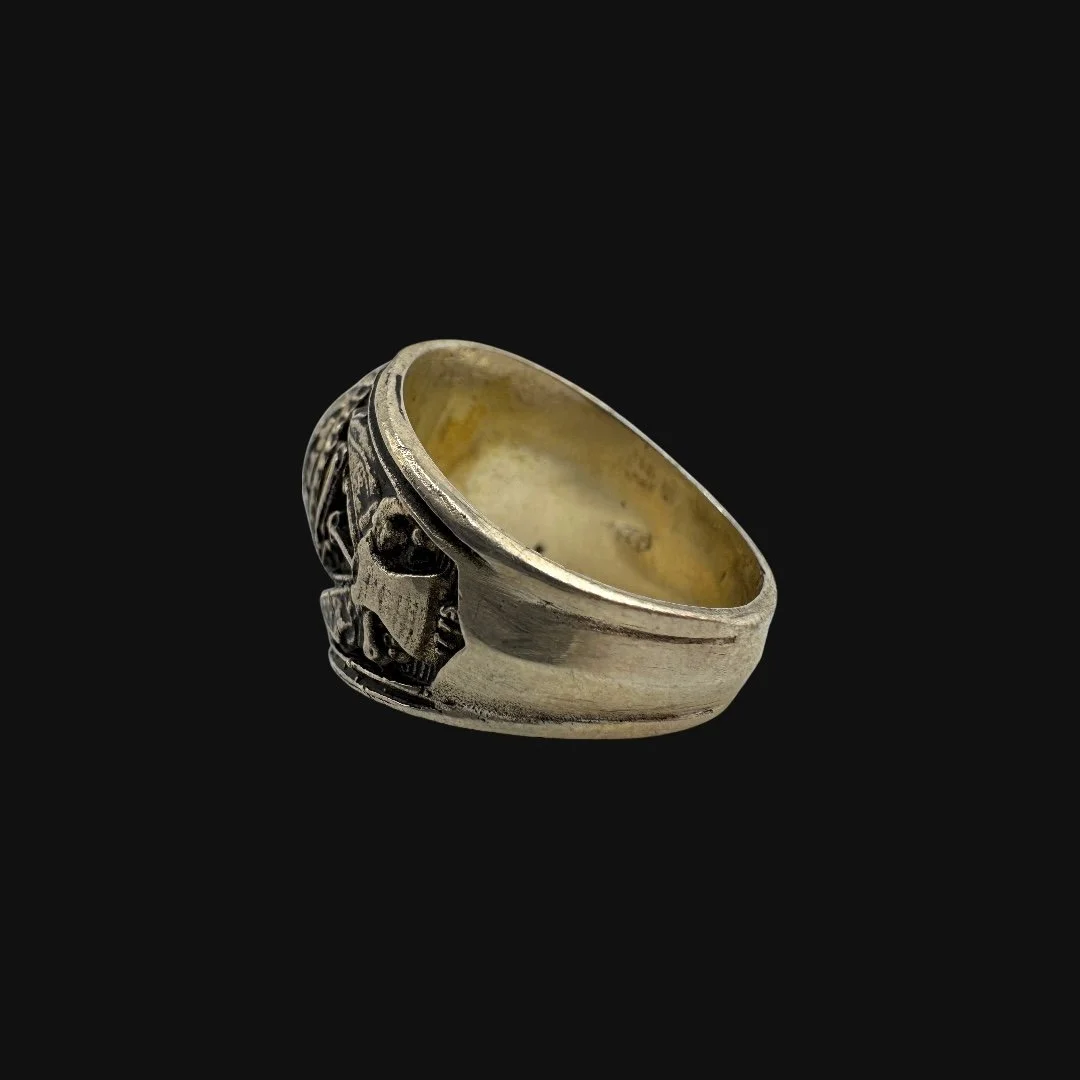 Image 8 of 13
Image 8 of 13

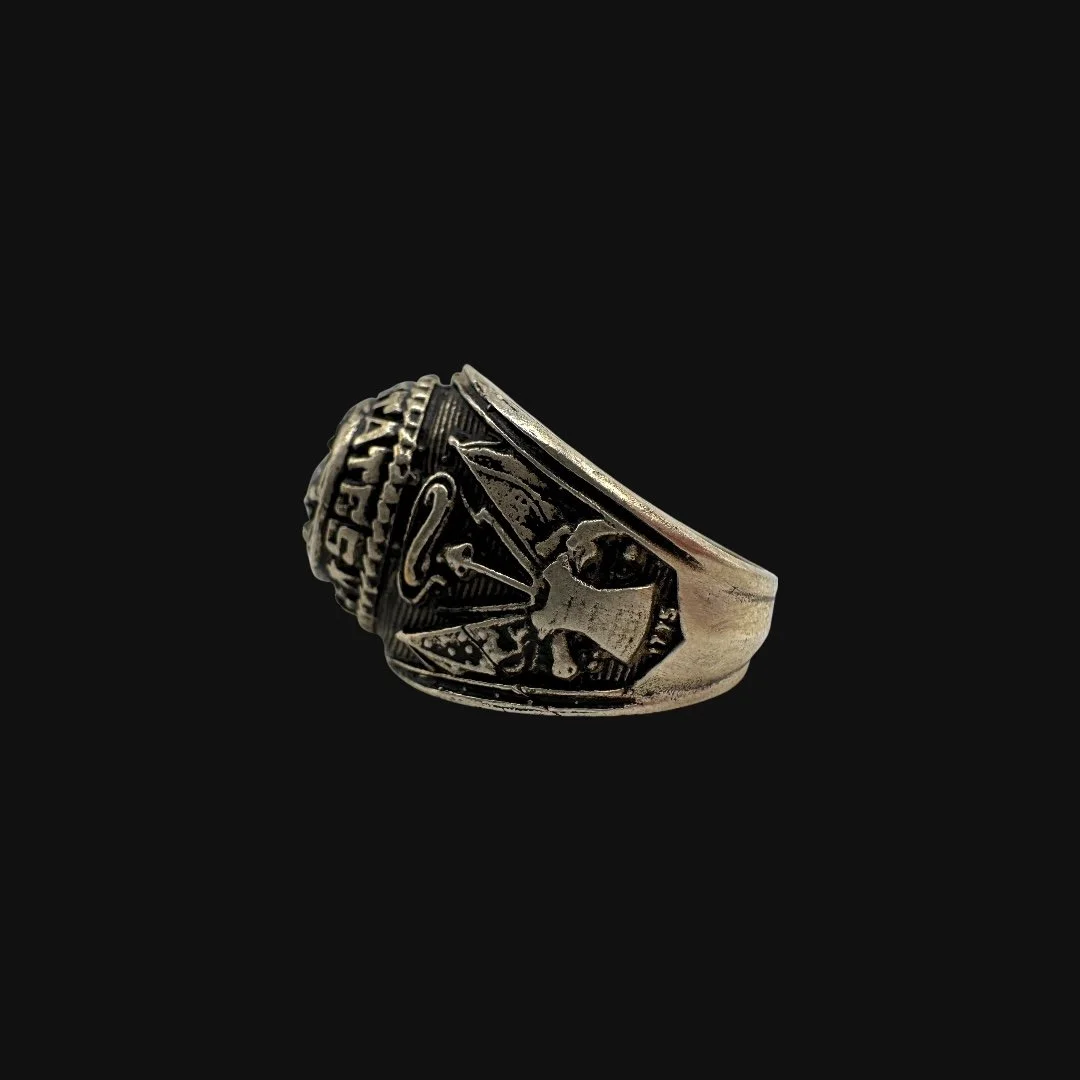 Image 9 of 13
Image 9 of 13

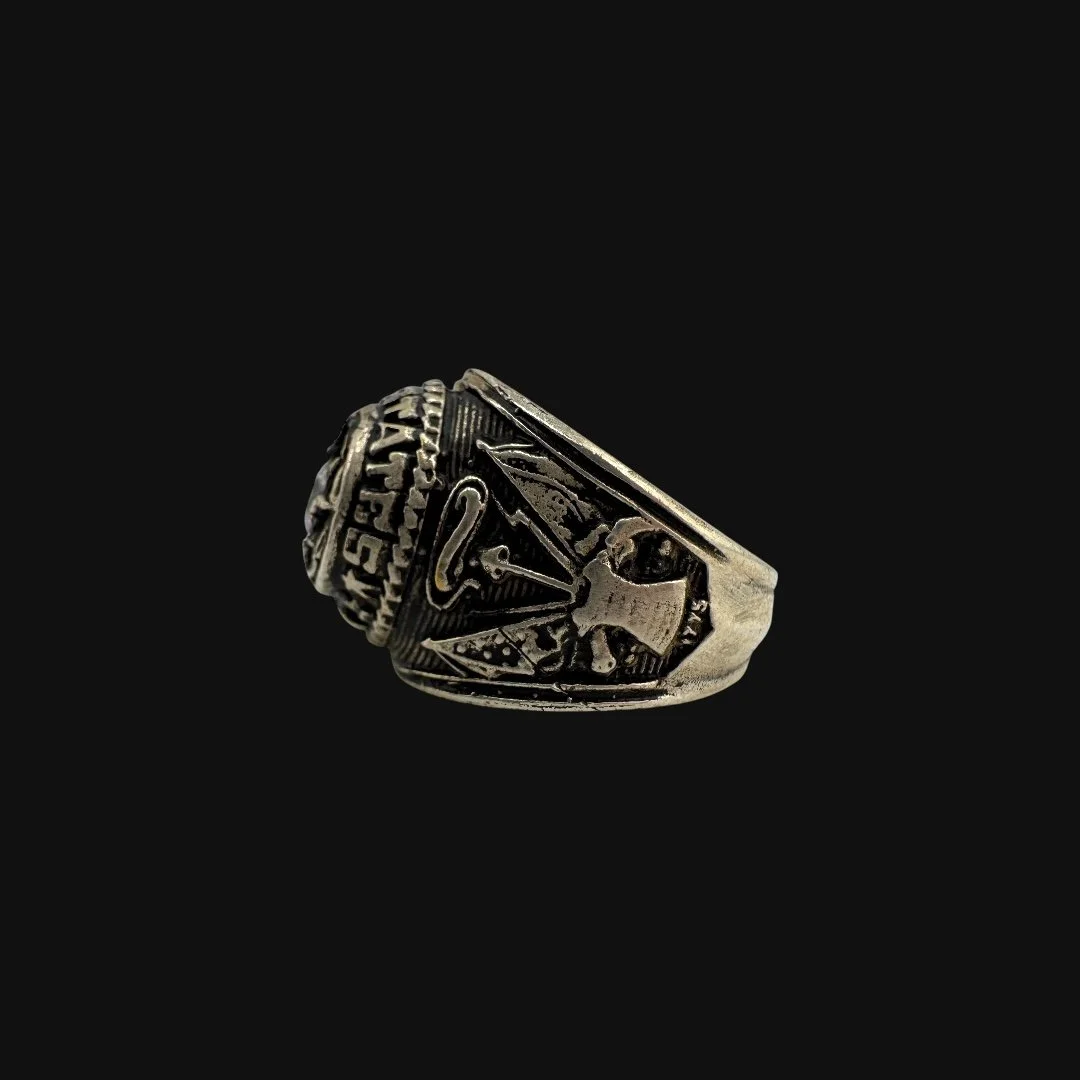 Image 10 of 13
Image 10 of 13

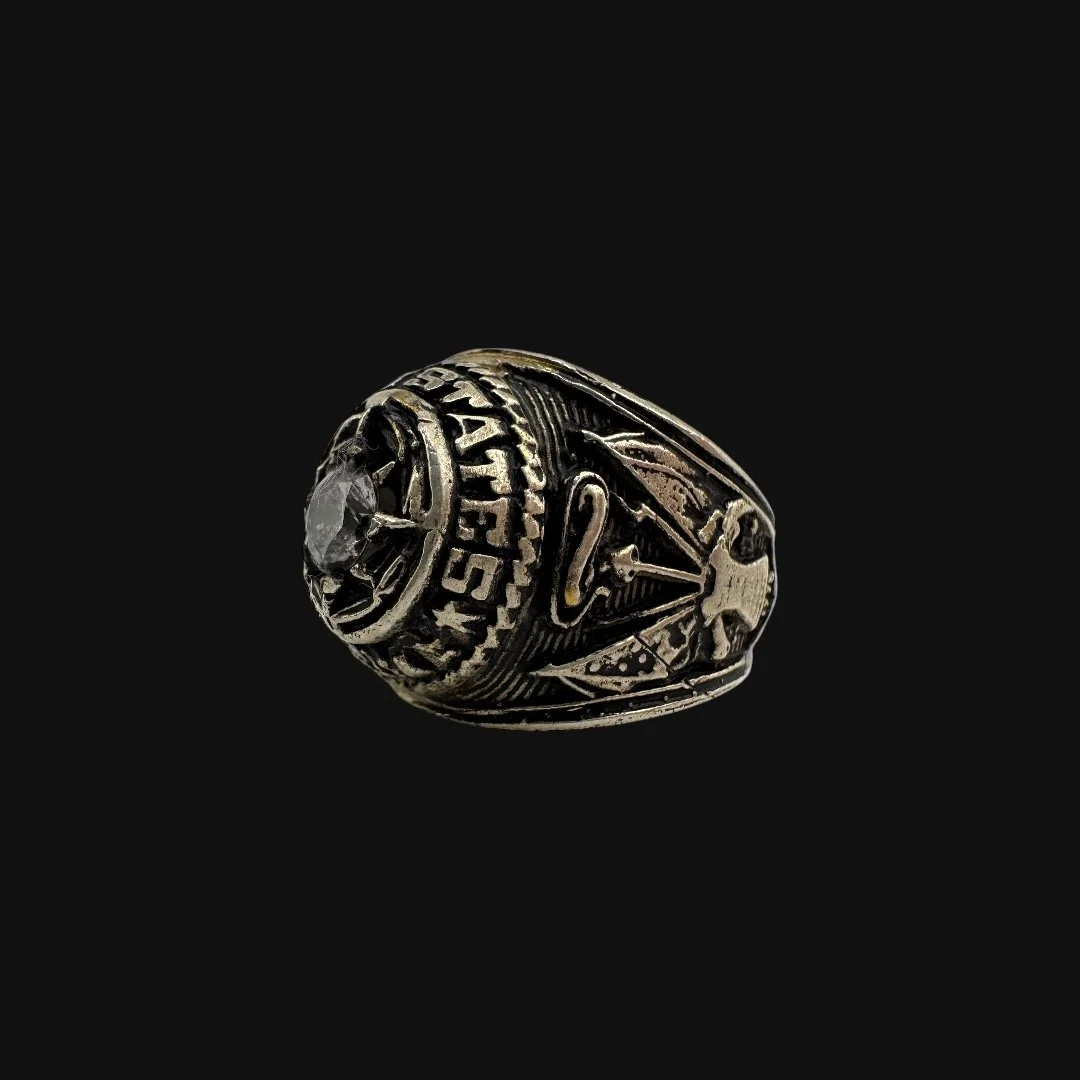 Image 11 of 13
Image 11 of 13

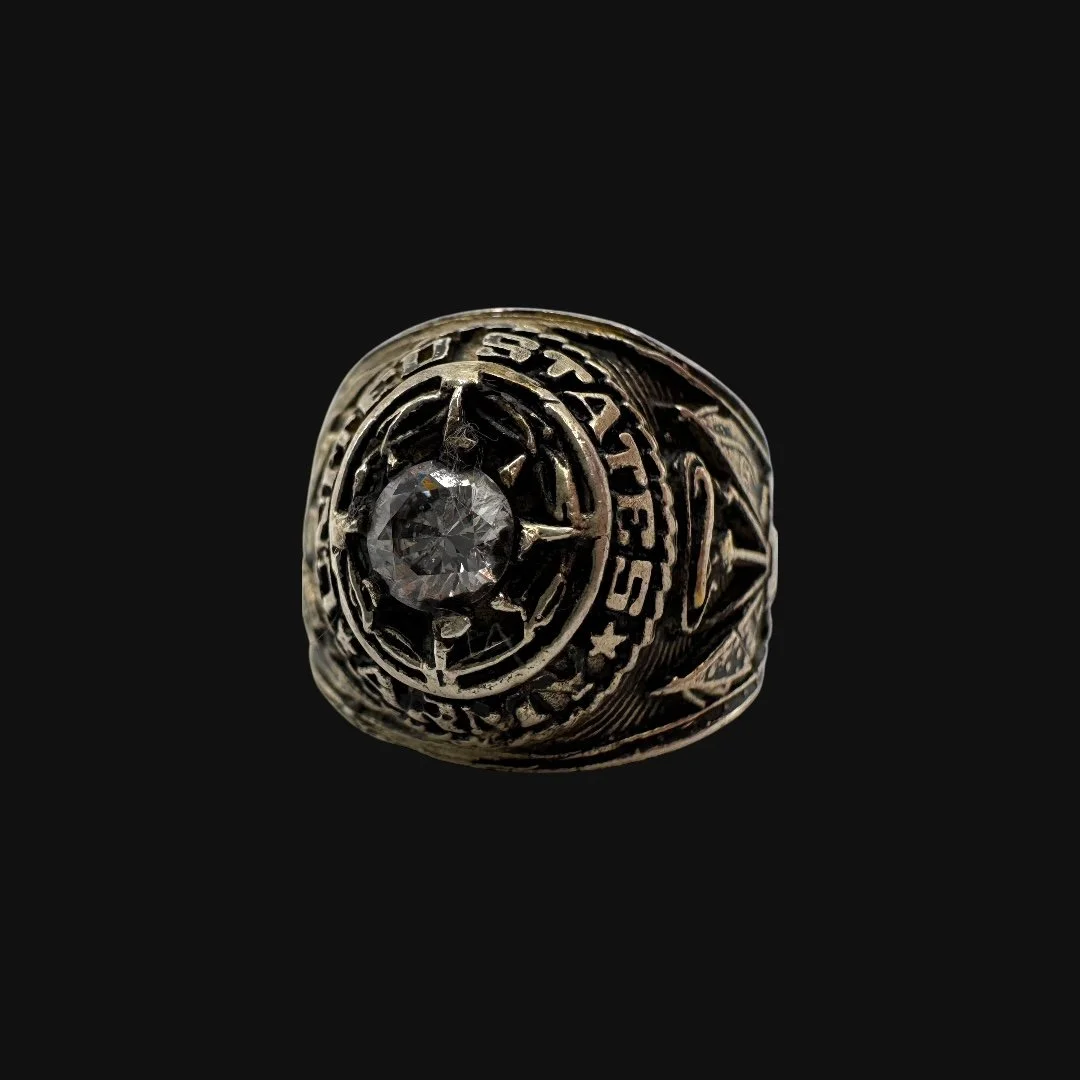 Image 12 of 13
Image 12 of 13

 Image 13 of 13
Image 13 of 13














Original Vietnam War United States Army 10K Soldier's Military Ring (Size 9.25)
Comes with a hand-signed C.O.A. and a full historical research write-up
From: Vietnam War
Branch: United States Army
Dated: 1960’s-1970’s
Ring Size: 9.25 (US)
Material: 10K
Wearable History Collection:
This authentic Vietnam War–era ring, preserved in its original and unaltered condition, reflects the craftsmanship and resilience of a generation that served in one of America’s most challenging conflicts. Forged during the turbulent years of the 1960s and 1970s, it carries the weight of history while remaining fully suitable for modern wear today. As part of our exclusive Vietnam War “Wearable History Ring Collection,” it offers a rare chance to own and wear a genuine artifact of the era. Both a timeless accessory and a direct link to the men who endured the jungles, firebases, and patrols of Vietnam, this one-of-a-kind ring stands as a wearable tribute to their courage, sacrifice, and brotherhood.
Historical Significance to the U.S. Army in Vietnam:
The United States Army was the dominant American ground force in the Vietnam War, carrying the greatest burden in both manpower and sacrifice. What began with a handful of advisors in the 1950s grew into a massive presence after the Gulf of Tonkin Resolution in 1964, peaking at more than 500,000 soldiers in 1969. The Army’s responsibilities spanned the entire conflict: launching large “search and destroy” missions against Viet Cong and North Vietnamese units, running pacification and counterinsurgency programs in villages, and building vital infrastructure such as bases, roads, and airstrips. Its Special Forces, the Green Berets, trained and lived among indigenous populations, carrying out covert missions in Cambodia and Laos while also forging local alliances.
Army troops fought in some of the war’s most pivotal battles. At the Battle of Ia Drang in 1965, the 1st Cavalry Division pioneered helicopter airmobile tactics, revolutionizing modern warfare while exposing the ferocity of North Vietnamese resistance. During the Tet Offensive of 1968, Army units battled to retake cities like Saigon and Hue, achieving military success but suffering heavy losses as the shock of the offensive weakened public support at home. Later, the Army led the Cambodian Incursion of 1970 and supported South Vietnamese forces during Operation Lam Son 719 in Laos in 1971, operations that revealed both the Army’s strength in conventional combat and the limits of America’s strategy.
Though the Army endured most of America’s 58,000 war dead, its service yielded enduring achievements. The development of helicopter-borne airmobile operations transformed U.S. doctrine, while the logistical and engineering feats that sustained forces across jungles and mountains demonstrated remarkable ingenuity. At the same time, the war underscored the difficulty of counterinsurgency, where battlefield victories often failed to translate into strategic gains.
The Army’s experience in Vietnam became a defining chapter in its history. It tested the resilience of its soldiers, reshaped doctrine, and accelerated the transition to an all-volunteer force. Though the war ended without the victory so many fought for, the Army’s role remains historically significant—marked by innovation, sacrifice, and lessons that continue to shape American military strategy in the modern era.
The Legacy Within This Ring:
This Vietnam War U.S. Army ring preserves the story of a soldier who faced the relentless trials of America’s longest and most divisive conflict of the twentieth century. For the Army, Vietnam demanded strength and endurance across every terrain, whether air assault operations in the Ia Drang Valley, search-and-destroy missions through dense jungle, or the hard-fought urban battles of the Tet Offensive. Each campaign tested the grit of its soldiers, forging bonds of loyalty that carried them through ambushes, hardships, and the constant uncertainty of guerrilla war. This ring was a private emblem of identity and survival, a reminder of sacrifice, brotherhood, and the will to push forward despite the cost. Every engraved detail reflects the pride of service, etched with the memory of those who fought side by side in an unforgiving environment. Today, this ring endures as a powerful relic of the U.S. Army’s legacy in Vietnam. It honors not only the soldier who once wore it but also the countless men whose courage and perseverance defined the Army’s role in a conflict that reshaped history. A piece of wearable heritage, it carries forward the enduring story of sacrifice, resilience, and duty lived out in the jungles and battlefields of Southeast Asia.
Comes with a hand-signed C.O.A. and a full historical research write-up
From: Vietnam War
Branch: United States Army
Dated: 1960’s-1970’s
Ring Size: 9.25 (US)
Material: 10K
Wearable History Collection:
This authentic Vietnam War–era ring, preserved in its original and unaltered condition, reflects the craftsmanship and resilience of a generation that served in one of America’s most challenging conflicts. Forged during the turbulent years of the 1960s and 1970s, it carries the weight of history while remaining fully suitable for modern wear today. As part of our exclusive Vietnam War “Wearable History Ring Collection,” it offers a rare chance to own and wear a genuine artifact of the era. Both a timeless accessory and a direct link to the men who endured the jungles, firebases, and patrols of Vietnam, this one-of-a-kind ring stands as a wearable tribute to their courage, sacrifice, and brotherhood.
Historical Significance to the U.S. Army in Vietnam:
The United States Army was the dominant American ground force in the Vietnam War, carrying the greatest burden in both manpower and sacrifice. What began with a handful of advisors in the 1950s grew into a massive presence after the Gulf of Tonkin Resolution in 1964, peaking at more than 500,000 soldiers in 1969. The Army’s responsibilities spanned the entire conflict: launching large “search and destroy” missions against Viet Cong and North Vietnamese units, running pacification and counterinsurgency programs in villages, and building vital infrastructure such as bases, roads, and airstrips. Its Special Forces, the Green Berets, trained and lived among indigenous populations, carrying out covert missions in Cambodia and Laos while also forging local alliances.
Army troops fought in some of the war’s most pivotal battles. At the Battle of Ia Drang in 1965, the 1st Cavalry Division pioneered helicopter airmobile tactics, revolutionizing modern warfare while exposing the ferocity of North Vietnamese resistance. During the Tet Offensive of 1968, Army units battled to retake cities like Saigon and Hue, achieving military success but suffering heavy losses as the shock of the offensive weakened public support at home. Later, the Army led the Cambodian Incursion of 1970 and supported South Vietnamese forces during Operation Lam Son 719 in Laos in 1971, operations that revealed both the Army’s strength in conventional combat and the limits of America’s strategy.
Though the Army endured most of America’s 58,000 war dead, its service yielded enduring achievements. The development of helicopter-borne airmobile operations transformed U.S. doctrine, while the logistical and engineering feats that sustained forces across jungles and mountains demonstrated remarkable ingenuity. At the same time, the war underscored the difficulty of counterinsurgency, where battlefield victories often failed to translate into strategic gains.
The Army’s experience in Vietnam became a defining chapter in its history. It tested the resilience of its soldiers, reshaped doctrine, and accelerated the transition to an all-volunteer force. Though the war ended without the victory so many fought for, the Army’s role remains historically significant—marked by innovation, sacrifice, and lessons that continue to shape American military strategy in the modern era.
The Legacy Within This Ring:
This Vietnam War U.S. Army ring preserves the story of a soldier who faced the relentless trials of America’s longest and most divisive conflict of the twentieth century. For the Army, Vietnam demanded strength and endurance across every terrain, whether air assault operations in the Ia Drang Valley, search-and-destroy missions through dense jungle, or the hard-fought urban battles of the Tet Offensive. Each campaign tested the grit of its soldiers, forging bonds of loyalty that carried them through ambushes, hardships, and the constant uncertainty of guerrilla war. This ring was a private emblem of identity and survival, a reminder of sacrifice, brotherhood, and the will to push forward despite the cost. Every engraved detail reflects the pride of service, etched with the memory of those who fought side by side in an unforgiving environment. Today, this ring endures as a powerful relic of the U.S. Army’s legacy in Vietnam. It honors not only the soldier who once wore it but also the countless men whose courage and perseverance defined the Army’s role in a conflict that reshaped history. A piece of wearable heritage, it carries forward the enduring story of sacrifice, resilience, and duty lived out in the jungles and battlefields of Southeast Asia.